Since the first motorcar was unveiled by Karl Benz in 1886, humans have been dreaming of pushing the limits of what they can do.
The fastest production car in the world is currently the Bugatti Chiron Supersport 300+, with a top speed of over 489 kph (304 mph), but even this monster pales in comparison to some of the amazing vehicles that have held the land speed record over the years.
Over the last 140 years, many people have risked their lives pushing the limits to earn a place in the record books.
Designers have used steam, electricity, petrol and jet aircraft engines to propel their cars to greater speeds, while improved understanding of engineering and aerodynamics have made the cars sleeker and more slippery through the air.
The rules of a land speed record are strict. To be recognised as an official record, two runs must be made, with no more than an hour between runs. The average speed from these two runs is calculated and that is the speed that is officially recorded.
Here are some of the pioneering speed demons and the incredible cars they used to break the land speed record.
1 – La Jamais Contente - 105.882 kph (65.792 mph)
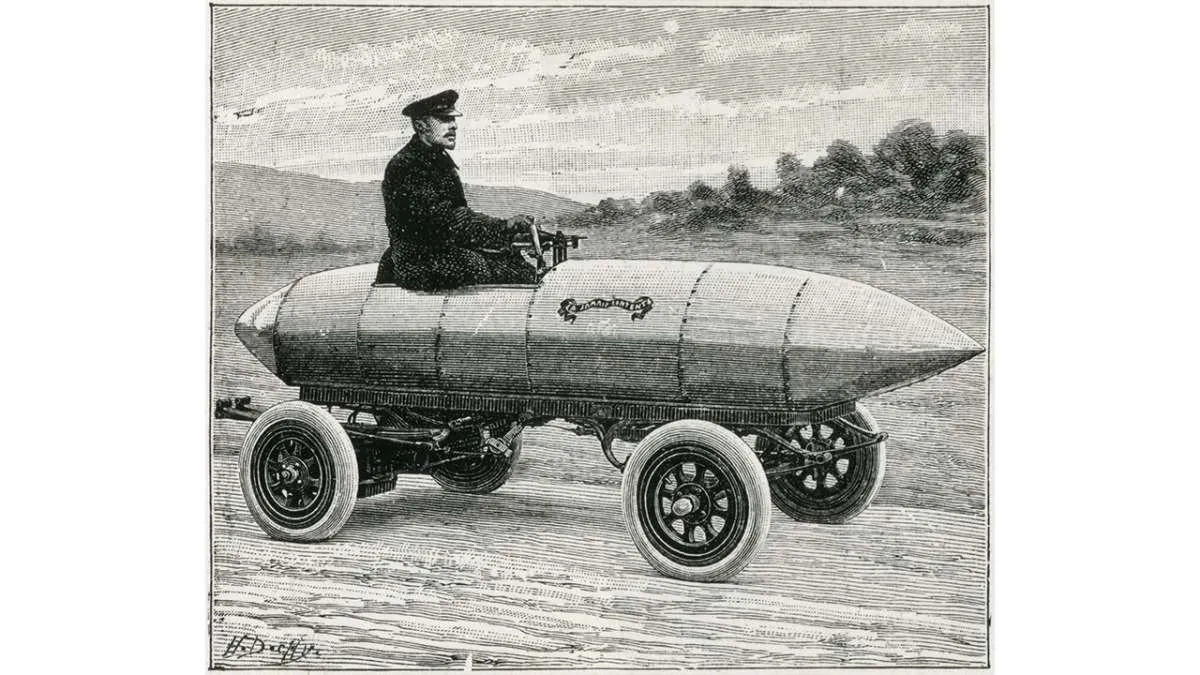
Driver: Camille Jenatzy (Belgium)
Date: 17 January 1899
'La Jamais Contente' (The Never Contented) was the first car to achieve a speed of over 100 kph in 1899. It was also the first car designed specifically to go as fast as possible, especially when driven by Belgian racer Camille Jenatzy.
La Jamais Contente was powered by batteries and was shaped like a bullet, although the high position of the driver and the exposed chassis demonstrated that car designers still had a lot to learn about aerodynamics.
Read more:
2 – Ford 999 Racer - 147.05 kph (91.37 mph)

Date: 12 January 1904
Driver: Henry Ford (USA)
Henry Ford had already set up two motor companies by 1904 but also had an interest in motor racing. In 1902 he built two racing cars, both called '999'.
Ford was determined to set a new land speed record and set about improving their design. The cars were essentially engines attached to a chassis, with no bodywork and seemingly no consideration for safety.
The Ford 999 did set a new land speed record in 1904, driving over an ice track on a frozen lake. This record only stood for a few weeks before being surpassed, but the publicity helped to establish the Ford name.
3 – The Stanley Rocket - 205.447 kph(127.659 mph)
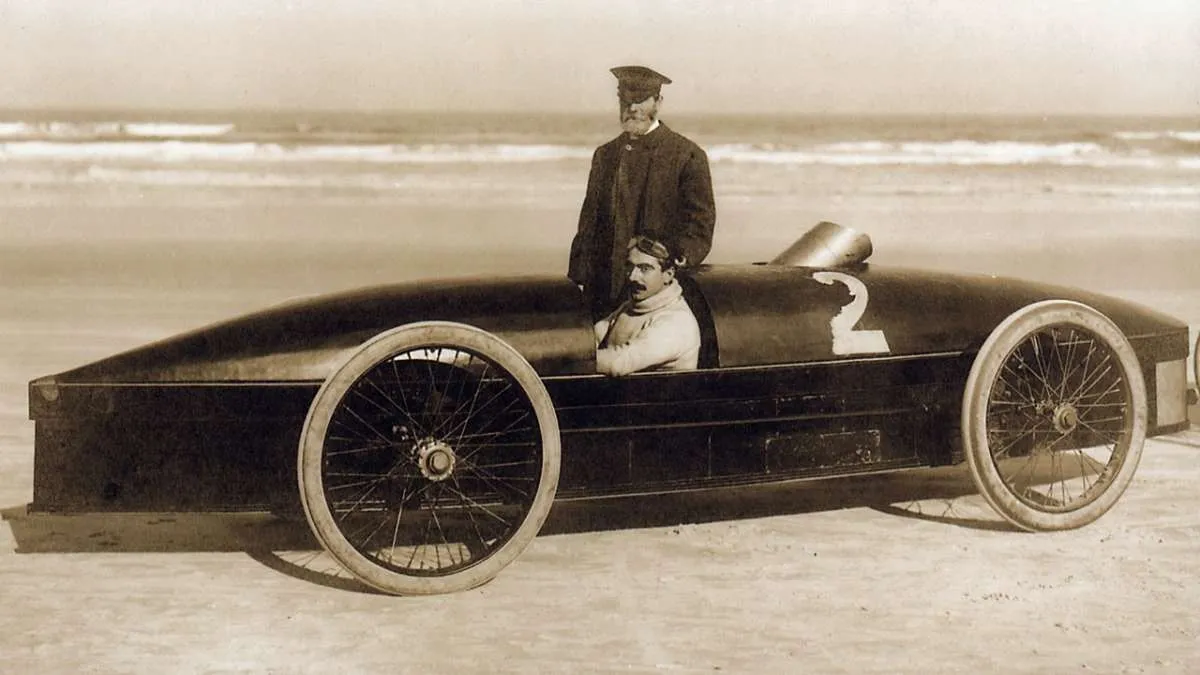
Date: 26 January 1906
Driver: Fred Marriot (USA)
Steam-powered trains were the norm back in the early 20th century, but car companies preferred gasoline to steam and chose to develop the internal combustion engine instead.
The Stanley Motor Carriage Company was one car manufacturer that had seen the advantages of steam-powered vehicles and decided to build a car capable of achieving the land speed record. In 1906 they achieved their target on Daytona Beach, USA, with Fred Marriot behind the wheel.
Its record for being the fastest steam-powered car stood for over a century before being surpassed by the British-built 'Inspiration' car driven by Charles Burnett III in 2009.
4 – The Fiat Mephistopheles - 234.98 kph (146 mph)
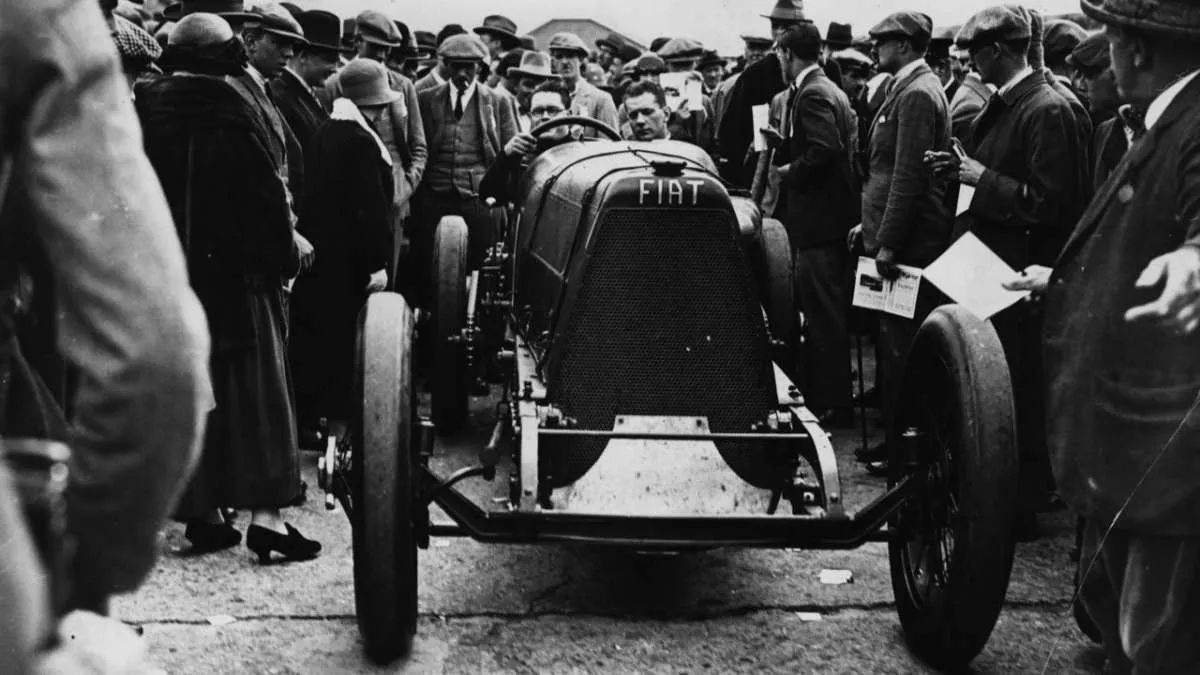
Date: 12 July 1924
Driver: Ernest Eldridge (GBR)
The Fiat Mephistopheles was a one-off racing car powered by an incredibly loud aeroplane engine with a single exhaust and brakes that only operated on the back wheels. Perhaps because of this, the car was named after a demon from German folklore.
It was the last car to set an official land speed record on a public road, which we assume was closed at the time.
5 – Sunbeam 350HP - 242.62 kph (150.76 mph)
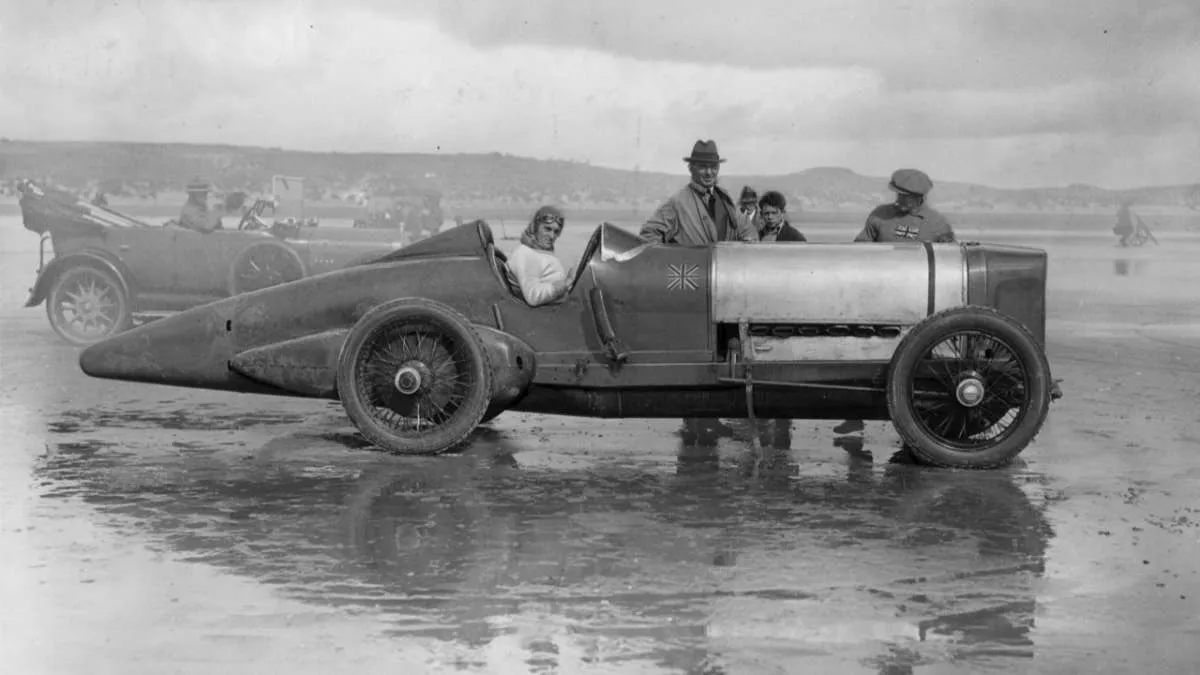
Date: 25 September 1924
Driver: Malcolm Campbell (GBR)
The Sunbeam 350HP was notable for being the first car driven by Malcolm Campbell to claim an official land speed record. Campbell was one of the best-known names in the early days of motor racing and achieved many speed records on land and water.
His first record was set on the beach of Pendine Sands, Wales, UK. Significantly, the Sunbeam was one of the first to be modified in a wind tunnel, leading to the nose being made smaller and the rear of the car being made more aerodynamic.
6 – Babs - 273.6 kph (170 mph)

Date: 28 April 1926
Driver: J G Parry-Thomas (GBR)
John Godfrey Parry-Thomas was a Welsh engineer who one day decided that his future lay in motor racing. He designed and built a car powered by an aeroplane engine, and christened it 'Babs'. In April 1926 he was able to set a new land speed record on the wet beach at Pendine Sands, Wales, UK.
Parry-Thomas was killed when the car overturned and crashed whilst trying to regain his record at the same venue in 1927. The car was buried on the spot where it crashed, before being excavated over 40 years later and restored to its former glory.
7 – Blue Bird - 281.5 kph (174.9 mph)

Date: 4 February 1927
Driver: Malcolm Campbell
Malcolm Campbell regained the land speed record in Blue Bird in 1927, powered by a Napier Lion aeroplane engine. However, his great rival Henry Segrave would take the record away from him only a month later.
Campbell would persevere with the car for several years in his attempts to regain his record, but would soon recognise the need to build a more modern and aerodynamic machine if he was to challenge again.
8 – Sunbeam 1000 hp Mystery - 327.97 kph (203.79 mph)

Date: 29 March 1927
Driver: Henry Segrave (GBR)
The Sunbeam 1000hp, also known as 'The Slug', was the first car to exceed 200 mph (321.9 kph). It was powered by two aircraft engines that had been removed from a power boat. These were installed in the car with one engine at the front and one in the back – the driver sitting between the two, which must have been quite toasty.
The car was the first British car to achieve a land speed record on US soil, requiring the much longer beaches available to reach a record speed. Even so, Segrave would still need to drive the car into the sea to slow it down, with braking technology yet to catch up with the rising speed of the cars.
9 – The Golden Arrow - 372.46 kph (231.45 mph)

Date: 11 March 1929
Driver: Henry Segrave (GBR)
Following his record-breaking success with the Sunbeam 1000hp, driver Henry Segrave decided that he was going to need an all-new car to regain the land speed record from the USA's Ray Keech. The Golden Arrow was designed by JS Irving and used an aeroplane engine, while also utilising many other elements of aircraft design such as a telescopic sight to aid steering and navigation.
Segrave's record was set on Daytona Beach, Florida, USA, after only one practice run. The Golden Arrow could have been capable of higher speeds, but a fatal accident on the beach two days later led all other attempts to be abandoned. Segrave would never drive the car again and was killed later that year trying to achieve a new water speed record.
10 – Blue Bird - 408.73 kph (253.97 mph)
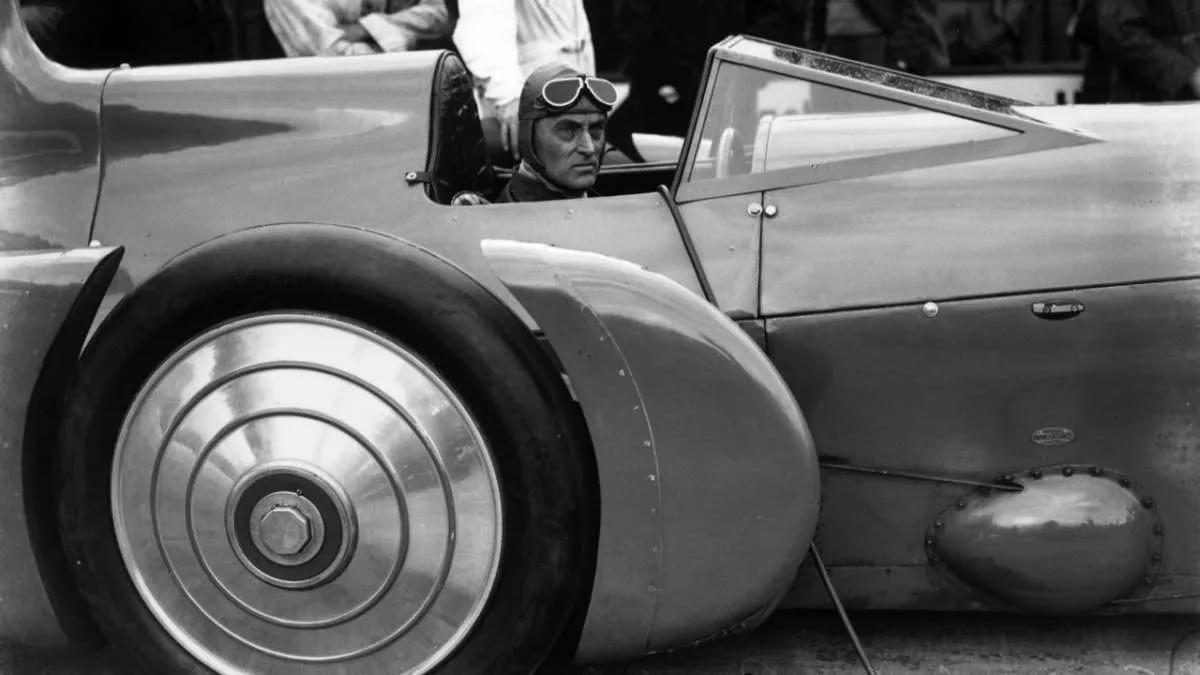
Date: 24 February 1932
Driver: Malcolm Campbell (GBR)
Malcolm Campbell was very fond of the name Blue Bird, and this version (the fourth to wear the Blue Bird name but certainly not the last) managed to break the land speed record on Daytona Beach, USA, in 1932.
The car had three times more power than the previous version of Blue Bird and managed to incorporate many more aerodynamic parts such as a tail fin. This helped keep the car stable at high speeds.
Campbell would go on to break three more land speed records before deciding to concentrate on water speed records.
11 – Thunderbolt - 502.12 kph (312 mph)

Date: 19 November 1937
Driver: George Eyston (GBR)
George Eyston was already an established and successful racing driver by the time he decided to try his hand at driving incredibly fast in a straight line. The car he used was known as 'Thunderbolt', and was a hugely heavy design equipped with multiple engines and the most modern aerodynamics at that time. It set a total of three land speed records before World War II got in the way.
This was the first time a land speed record had been set at the Bonneville Salt Flats, USA – it's 19 km of flat surface being perfect for reaching high speeds. It would go on to see many more records set over the years, as well as many annual speed festivals which still take place there.
12 – The Railton - 568.58 kph (353.3 mph)
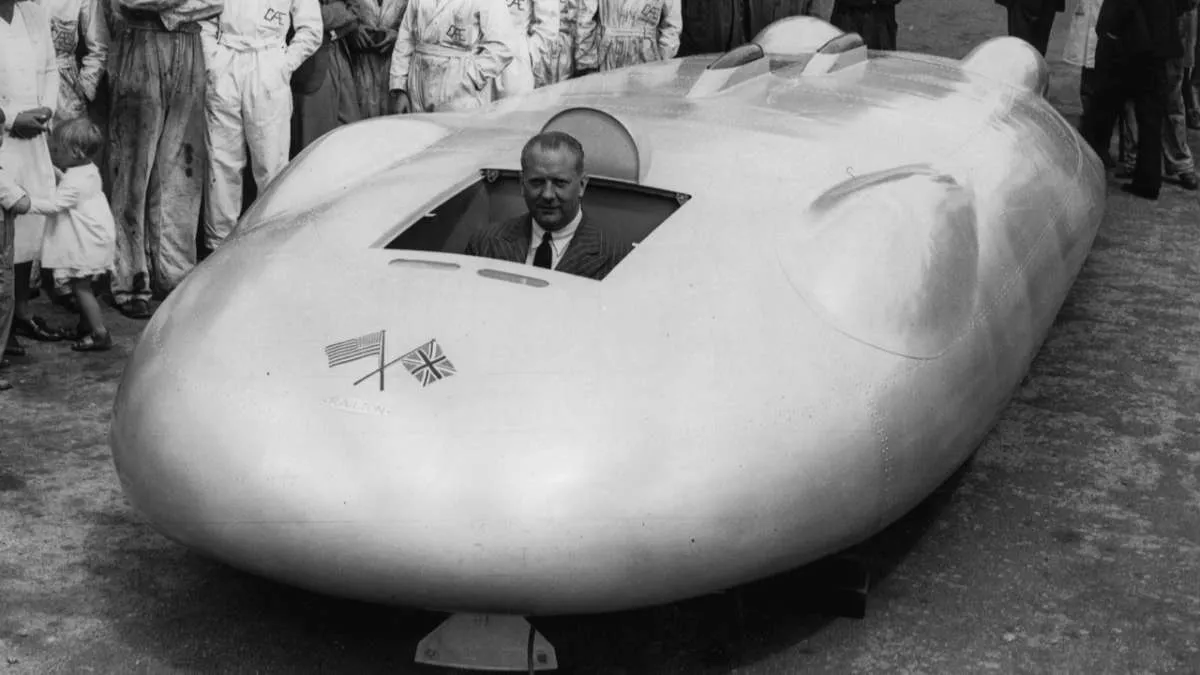
Date: 15 September 1938
Driver: John Cobb (GBR)
Like many other cars on this list, the 'Railton Special' was powered by two supercharged aeroplane engines taken from speed boats. However, the Railton had a trick up its sleeve, using a primitive four-wheel-drive system to cope with the extra power.
Following World War II, John Cobb returned to set one more record on the Bonneville Salt Flats, reaching 634.39 kph (394.19 mph) – a record that would stand for 16 years.
13 – The Spirit of America - 655.84 kph (407.518 mph)
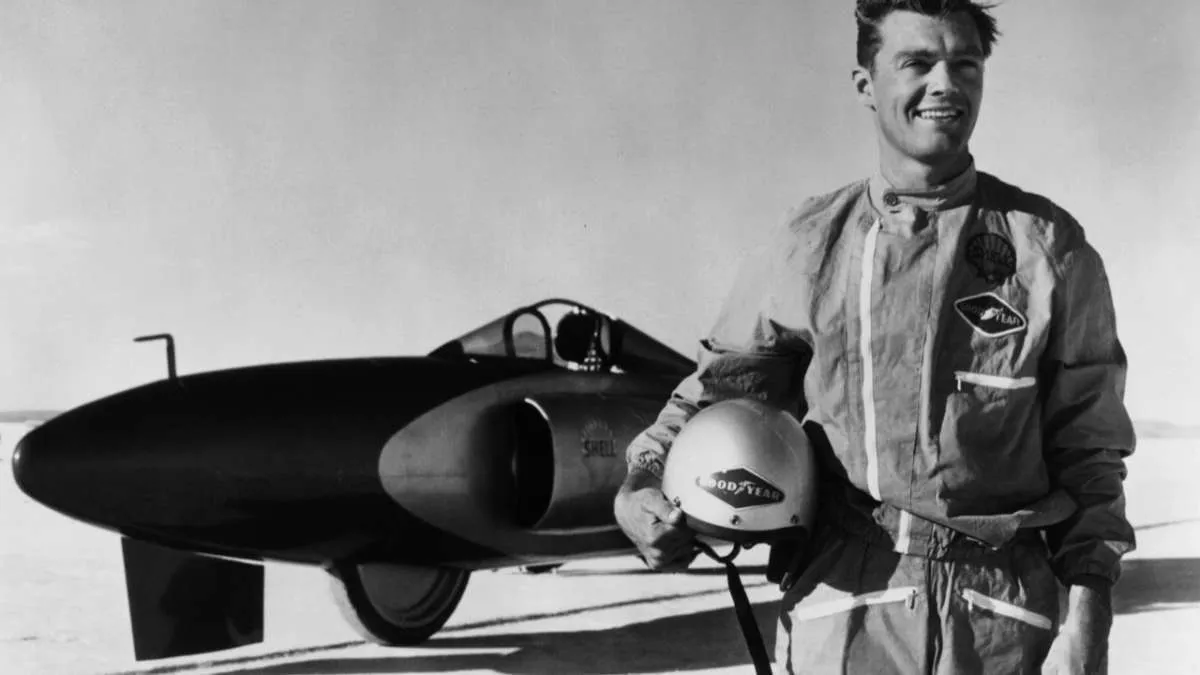
Date: 5 August 1963
Driver: Craig Breedlove (USA)
Craig Breedlove raised the bar massively in 1963 when his car 'The Spirit of America' smashed the land speed record. It was the first of a new generation of jet-engined vehicles, taking its engine from an old F-86 jet fighter. It was also the first land speed record holder not to be powered through the wheels.
It was not without controversy either. The FIA (Fédération Internationale de l'Automobile) – the governing body of motorsport – stated that a car needed to be equipped with 4 wheels and, therefore did not recognise the record.
Read more:
14 – The Green Monster - 698.34 kph (434.02 mph)
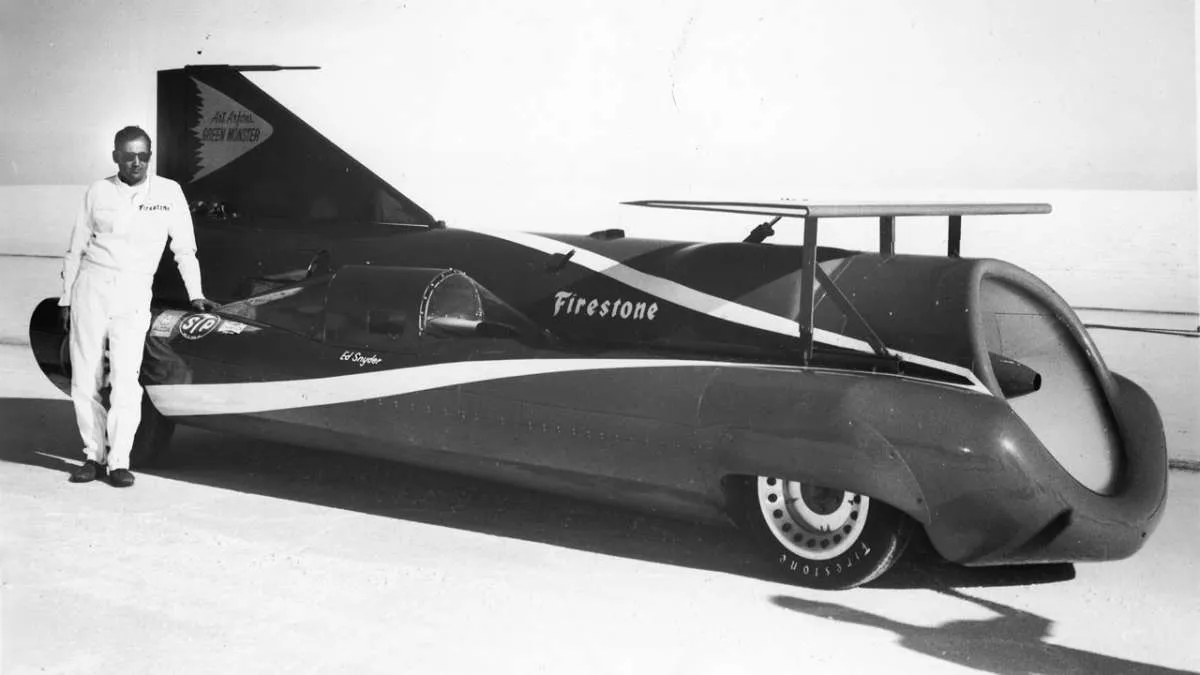
Date: 5 October 1964
Driver: Art Arfons (USA)
Art Arfons's car 'Green Monster' should not have existed. Its engine had been taken from an F-104 jet and scrapped after it was damaged during a flight. Arfons rebuilt and tested the engine in his garden even though its workings were classified information. His neighbours were thrilled.
His hard work paid off, and he set three fast times in his car before losing his record to Craig Breedlove a year later.
15 – The Spirit of America aka Sonic 1 - 966.574 kph (600.601 mph)

Date: 15 November 1965
Driver: Craig Breedlove (USA)
Unlike Breedlove's first 'Spirit of America', his second version (also named 'Sonic 1') had four wheels and was recognised by the FIA when it hit 966 kph in November 1965.
It also had the same engine as Art Arfons's Green Monster, and both cars traded records between October 1964 and November 1965 until Sonic 1 ultimately won the battle.
16 – The Blue Flame - 1,014.511 kph (630.388 mph)
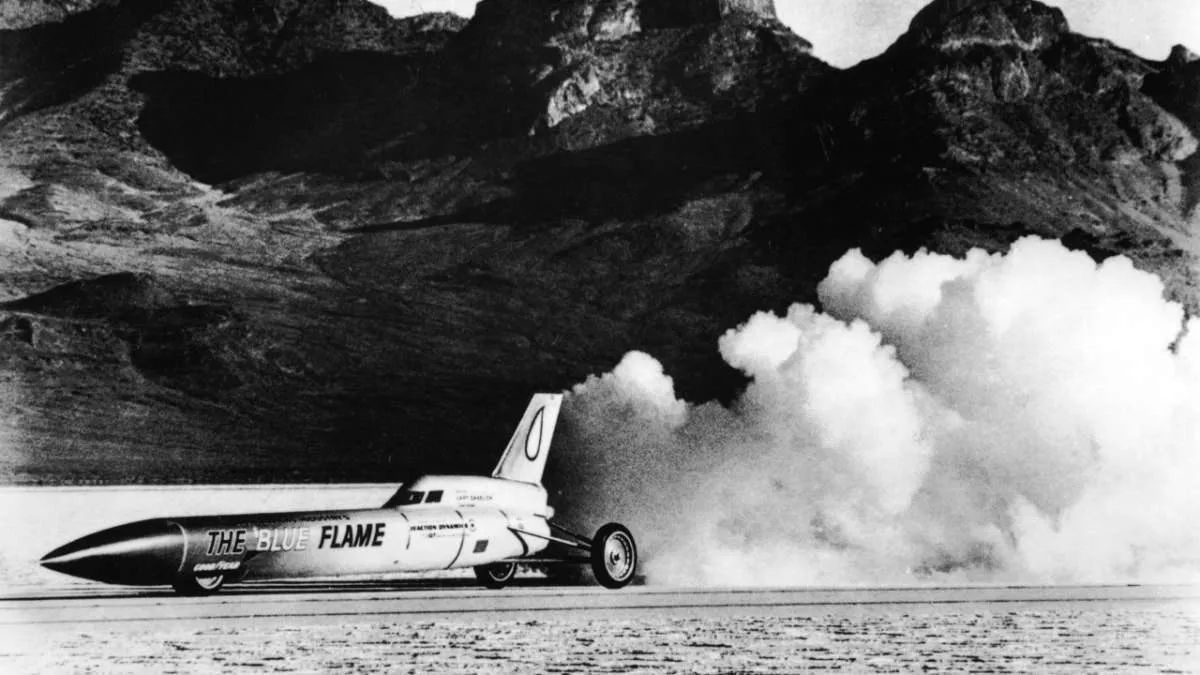
Date: 23 October 1970
Driver: Gary Gabelich (USA)
'Blue Flame' was essentially a rocket with wheels attached, becoming the fastest land vehicle on Earth in 1970 when driven by the very brave Gary Gabelich.
Its run was different to other land speed record cars in that it only could carry enough fuel to power it up to its top speed for 20 seconds, coasting and maintaining speed through the recorded run.
17 – Thrust2 - 1,019.468 kph (633.468 mph)
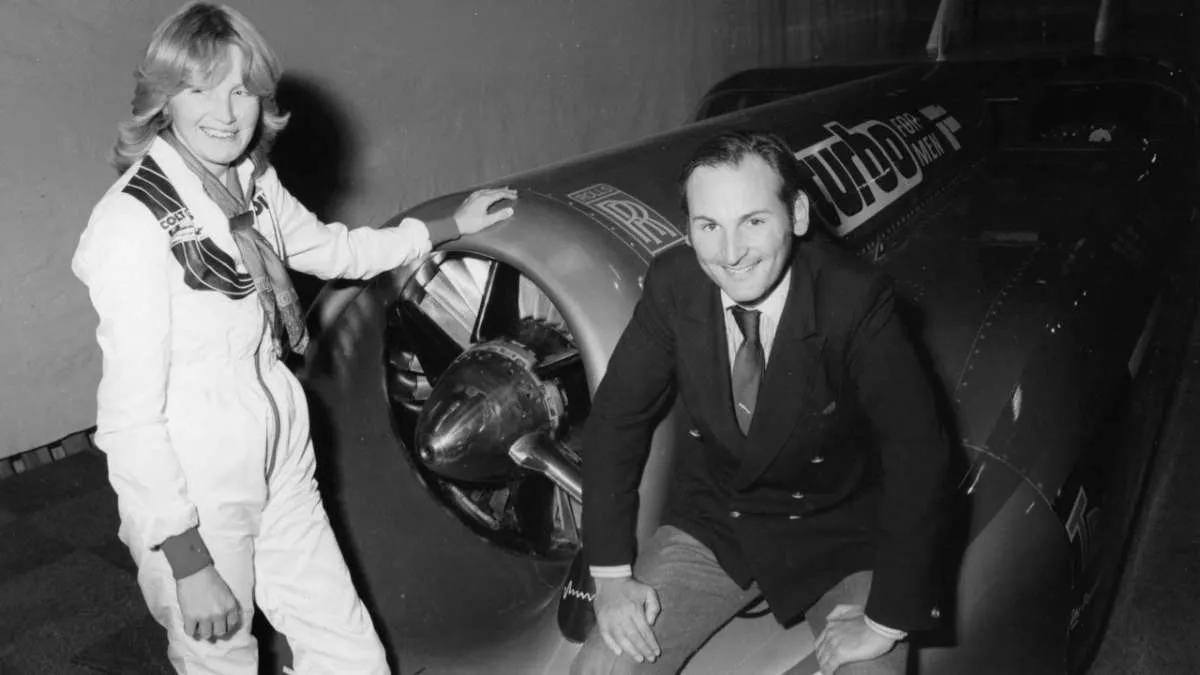
Date: 4 October 1983
Driver: Richard Noble (GBR)
The design of the 'Thrust 2' is very reminiscent of Art Arfons's 'Green Monster' car of 1964, with the jet turbine mounted centrally at the front of the vehicle and the cockpit window to one side.
Richard Noble was motivated by his desire to bring the land speed record back to Britain, and on 4 October 1983, he achieved this with an average speed of 1,019 kph across his two timed runs across Black Rock Desert, USA.
18 – Thrust SSC - 1,223.6 kph (760.3 mph)
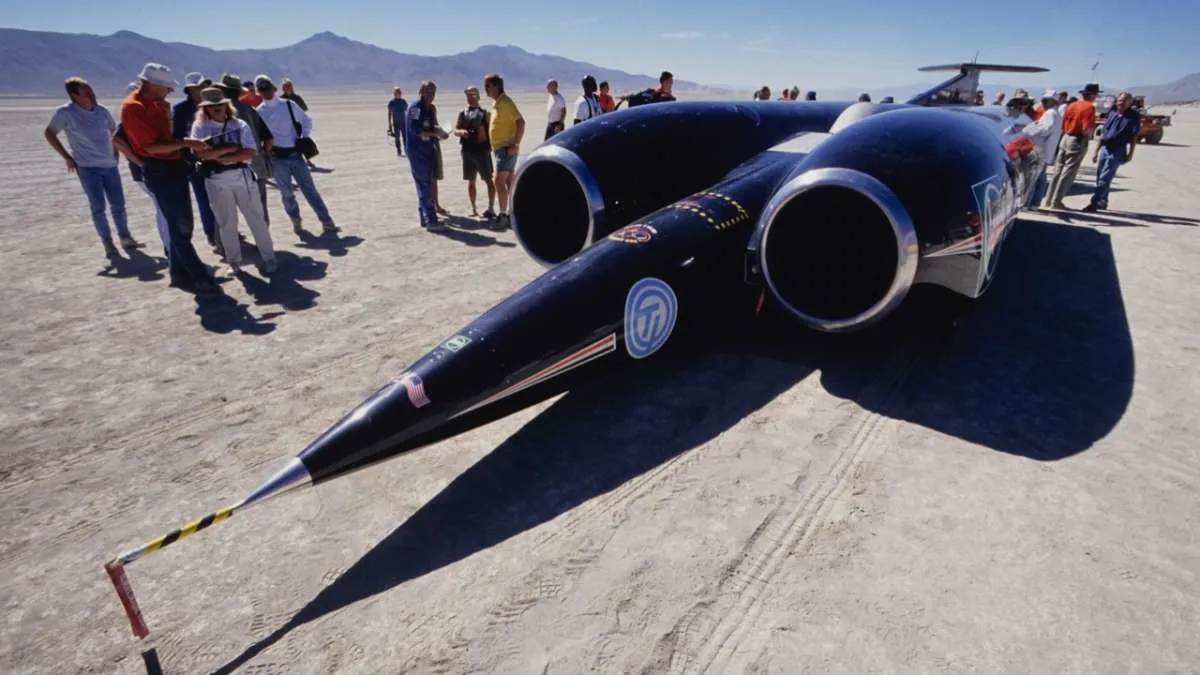
Date: 15 October 1997
Driver: Andy Green (GBR)
The Thrust SSC is the fastest car in the world, achieving a speed of 1,223.6 kph (760.3 mph). With the help of land speed record holder Richard Noble, RAF pilot Andy Green became the first land speed holder to break the sound barrier.
Almost 30 years later, this amazing record still stands. The last attempt to top this achievement was the Bloodhound LSR, which would have potentially been capable of speeds of over 1,600 kph. Unfortunately, the company behind the project went bankrupt in 2018 and further attempts to revive it have so far stalled.
Read more: